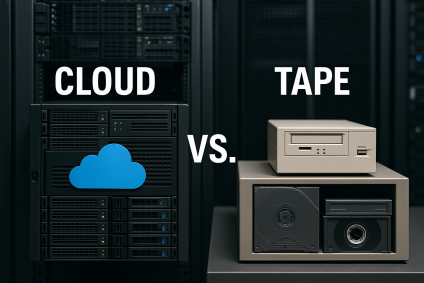Can Data Migration Costs Be Capitalized?
Data migration isn’t just a routine line item anymore. Whether you’re moving to the cloud, switching platforms, or upgrading from tape to disk, migration is one of the most complex—and costly—parts of any IT transformation. And here’s the question companies are finally asking:
Can data migration costs be capitalized?
The answer isn’t black and white. Some costs may qualify as capital expenditures (CapEx), while others must be booked as operating expenses (OpEx). Getting it wrong can mean audit issues, compliance risk, or missed financial opportunities.
Let’s break it down in plain terms—without the accounting jargon.
What Does It Mean to Capitalize a Cost?
Capitalizing a cost means you treat it as an asset that provides long-term value—so it’s placed on your balance sheet and depreciated over time. This is different from an expense, which hits your income statement immediately.
-
Example of a capitalized cost: Buying a new storage server.
-
Example of an expensed cost: Paying a technician to move data onto that server.
Understanding this distinction is critical if you’re planning a major IT upgrade or cloud migration.
So… Can Data Migration Costs Be Capitalized?
Yes—but only some of them.
According to FASB ASC 350-40 (for U.S. businesses) and IFRS (for international companies), you can capitalize certain costs—but only during specific phases of the migration.
In general, the application development phase is where capitalization is allowed. Everything else—like planning or post-go-live support—must be expensed.
Costs That May Be Capitalized
If you’re migrating internal-use software or infrastructure, the following costs often qualify:
-
Custom software development to support migration
-
Configuration work done during the development phase
-
Tools or platforms purchased to build a permanent data solution
-
Developer labor tied directly to implementation
-
Testing and validating the new system after data has been moved
The key is documentation. If you can prove these costs were incurred during development and add long-term value, they can likely be capitalized.

Costs That Must Be Expensed Immediately
Some expenses can’t be capitalized, no matter how crucial they seem:
-
Initial planning or feasibility assessments
-
Vendor demos or comparison tools
-
Staff training on the new system
-
Manual data cleansing or deduplication
-
Transporting physical assets like drives or tapes
-
Downtime and troubleshooting
-
Subscription fees for SaaS platforms
Misclassifying these could trigger audit concerns or even financial restatements.
What About Cloud Migrations or SaaS Projects?
This is where things get tricky. If you’re moving data from on-premise systems to a cloud platform like AWS, Azure, or Google Cloud, the rules still apply—but with added complexity:
-
Cloud integration costs? ✔️ May be capitalized.
-
Subscription fees? ❌ Always expensed.
-
Data transfer and cleansing? ❌ Expensed.
-
Migration software tools? ✔️ Possibly capitalized, if part of development.
When SaaS is involved, follow FASB ASC 842 and 350-40 closely—misclassification here can distort EBITDA and affect investor confidence.
How About Tape Migrations?
Many enterprises are still working with tape libraries—like LTO or 3592—for archival storage. If you’re upgrading from LTO-6 to LTO-9 or migrating from legacy formats, here’s how to classify your spend:
-
New library hardware or robotic tape systems = Capitalizable
-
Software to manage or read new tape formats = Capitalizable
-
Labor to transfer or wipe tapes = Expensed
-
Destruction services or degaussing = Expensed
Pro tip: Don’t lump tape migrations into a generic “storage upgrade” bucket. When positioned correctly, these projects may qualify as infrastructure buildouts—unlocking more capitalizable value.
Align IT and Finance Early
Too often, IT and finance operate in silos. IT teams focus on tools and uptime; finance cares about compliance, depreciation, and audit readiness. For data migration to be treated as a strategic investment—not just a cost center—both departments must sync from the start.
-
Break your project into clear phases: planning, development, testing, post-go-live.
-
Track all costs by phase and type.
-
Make sure your ITAD vendor understands financial classifications, not just tech specs.
Risks of Getting It Wrong
Capitalizing the wrong costs—or failing to capitalize when appropriate—can lead to serious consequences:
-
Audit flags or compliance violations (especially under Sarbanes-Oxley)
-
Financial restatements or balance sheet errors
-
Missed tax advantages or depreciation opportunities
-
Loss of credibility with stakeholders
How We Can Help
At WeBuyUsedITequipment.net, we do more than support data migration—we help our clients stay compliant and make smart financial decisions. Our services include:
-
Detailed migration documentation for audits
-
Chain of custody and asset tracking
-
Buyback programs for legacy servers, tapes, and storage
-
NIST 800-88 data wiping services
-
Pre-migration cost analysis to optimize CapEx vs. OpEx
Ready to migrate with confidence? Get a Free Quote or book a strategy call today.
Final Takeaway: Can You Get Money for Data Migration Costs?
Absolutely. If done right, data migration costs can be capitalized—turning a necessary upgrade into a smart financial move. But the key is understanding what qualifies, documenting carefully, and working with the right partners.
Don’t let poor classification decisions eat into your bottom line. Make your migration count—on the balance sheet and beyond.







